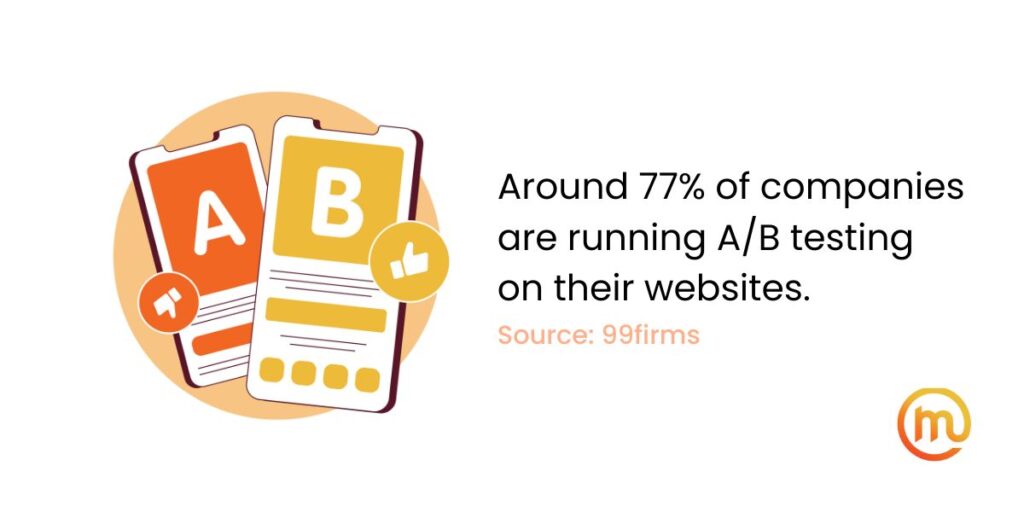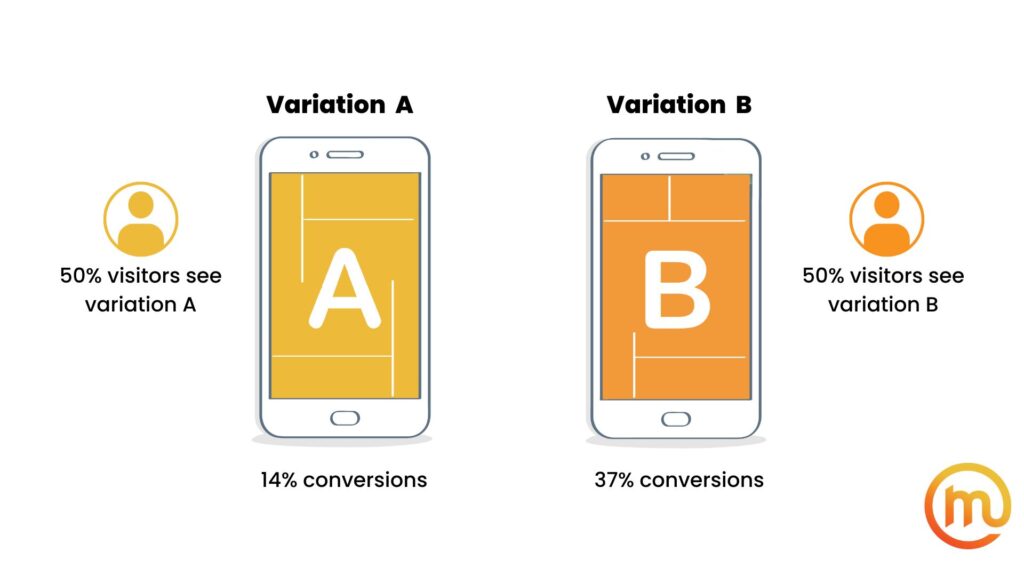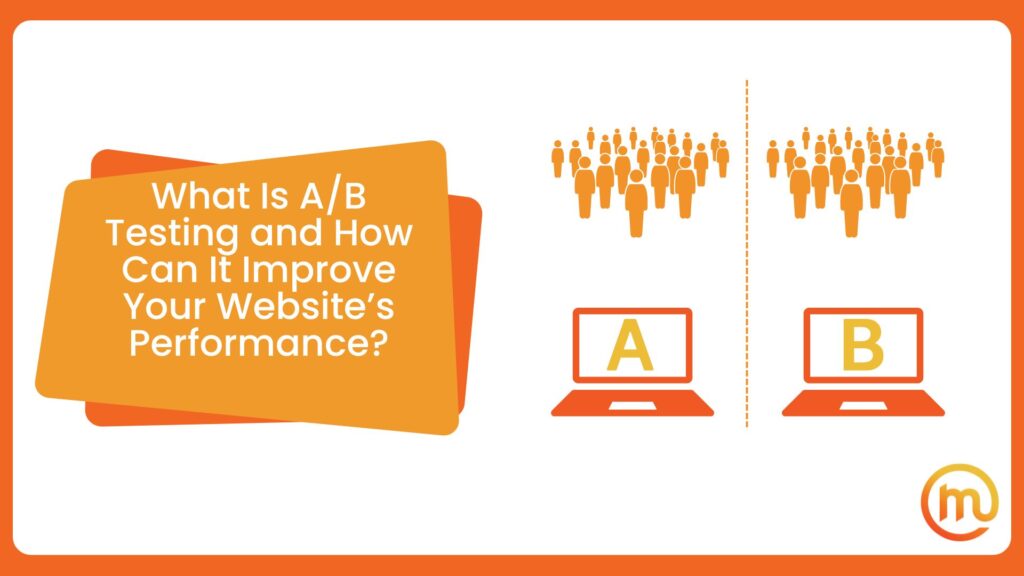Imagine having the power to pit two versions of a webpage or an ad against each other in a battle of the fittest, and the winner gets to stay. Well, there’s a simple method for that – A/B testing, no fortune teller included. But what is A/B testing exactly? How does it help keep your marketing campaigns well-oiled, performance-boosting machines? Here’s everything you need to know.
What Is A/B Testing in Marketing?
As a small business owner trying to navigate the mayhem that comes with running a digital marketing campaign, you probably spend a lot of time playing the guessing game. There’s plenty of mixing and matching, looking for what strikes gold with your target audience.
But then, you stumble upon something called A/B testing, or the online advertising agency you work with suggests trying it out. But, what is A/B testing, anyway? Is it really that helpful when tweaking different aspects of your campaign?
This special method compares two or more versions of a piece of marketing content, all in the name of finding out which one your customers like more. According to the results you get, you will be able to make well-informed, data-driven decisions, instead of simply guessing and trusting your intuition.
Adjusting the campaigns based on cold, hard data is really a no-brainer. There’s a reason why nearly 80% of companies are all aboard the A/B train, with roughly half of them using specialized software for this task. But before all that fancy tech entered the picture, the basic principle of this method has been tested and tweaked for different purposes just over a century now – can you believe it?

From Growing Plants to Boosting Conversion Rates – The Evolution of A/B Testing
Back in the 1920s, a statistician and biologist Ronald Fisher figured out what would become the cornerstone of A/B evaluation. However, his experiments weren’t about web design or ads – they were about crops! True to his profession, Fisher was able to work out the basic principles of this method by asking questions like – what happens if more fertilizer is added to this patch of land?
Fast forward to the 1950s, and those same principles found their way into clinical trials in medical research. By the time the 1960s and 1970s rolled around, marketers jumped on the bandwagon, using these ideas to assess direct response campaigns, such as the effectiveness of letters and postcards.
It wasn’t until the 1990s that A/B analysis as we know it today really took shape, but here’s the kicker – the math behind it all? It’s still the same tried-and-true formula that originated in Fisher’s fields.

How Does A/B Testing Work? Here’s How This Method Turns Guesswork Into Success Work
A/B testing is both a randomized and a controlled experiment. It’s all carefully controlled, but when it comes to who sees what, it’s completely random. Whether you’re evaluating a landing page or a specific element, A represents the control, meaning the original variable, while B is the variation, meaning the new version that will be pitted against the original. And well, which one is the winner variable will be clear once the test is done.
Here’s how it works – one group of visitors sees version A, while another group gets version B, all within the same timeframe. After this period is done, it’s all about the numbers. Statistical analysis crowns the winner, the version that hits the mark for your conversion goals. Of course, these goals vary depending on the industry of your business. For an eCommerce website, it might be all about racking up sales, while for a B2B business, it will probably be about scoring those qualified leads.

How to Perform an A/B Test – The Basic Outline
The whole ordeal kicks off with some good old-fashioned data gathering to figure out which pages or components could use a little TLC. For this, you can use Google Analytics or any other alternatives to pinpoint prime candidates for improvement, such as high bounce or drop-off rates. Once you’ve zeroed in on what needs a boost, it’s time to set the goals, which can be anything from clicking a button to making a purchase.
Here’s a simple example to paint a clearer picture. Say you’re curious if the size of your contact button is making or breaking those clicks. The metric here? Easy – the number of clicks. So, you whip up two versions – one smaller, one bigger – and run them through testing software. Just like that, you’ll get the inside scoop on which button size gets the most love.
Of course, this is just the tip of the iceberg. In reality, you probably won’t be evaluating just the size, but also the color, the font, and much more. And that’s when things start to get really interesting – and, let’s be honest, a bit complicated. That’s why teaming up with an experienced digital advertising agency such as Made Online is a smart move not just for the testing phase but for the campaign as a whole.

What Are the Different Types of A/B Tests?
There are four basic methods of testing – A/B, Split, Multivariate, and Multipage testing. While we’ll mostly discuss the first type, it’s important to understand other avenues – after all, customization and variety are the pillars of any content marketing campaign out there, and knowing all of your options is always a good starting point.
However, let’s get one thing straight – the methods we’ll cover here aren’t just different versions of A/B testing. They are distinct, standalone methods with their own unique approaches, but they do share the same basic goal – figuring out what works best.
Split URL Testing
Many people mix up Split URL with A/B testing, but there’s actually an important difference between the two. This method involves creating an entirely new version of a webpage, not just a single, isolated component, and evaluating it against the original URL to see which version brings the better results.
So, the A of this equation is the current URL, while the B is the new URL. Obviously, this method is ideal when you want to make major changes to a particular webpage, especially in terms of design.
Multivariate Testing (MVT)
Multivariate testing is probably the most complex out of all four methods. Unlike A/B testing, here, you’re evaluating multiple elements on a webpage – like images, headlines, and buttons – all at once, to figure out which combination works best.
There’s not just an A and a B – with multivariate testing, there’s the whole alphabet! For example, if you’re analyzing two versions of a page, each with a call-to-action button, a hero image, and a headline, you’ll actually end up comparing eight different combinations. Naturally, this process is much more complicated and usually done by experts at a content marketing agency. However, when done right, it can save you from running multiple A/B tests on a single webpage.
Multipage Testing
Lastly, Multipage testing allows you to experiment with changes across several pages. You can either create new versions of each page in your sales funnel or test how adding or removing certain elements affects the overall experience. With this more encompassing approach, this method helps ensure a consistent experience for your audience across different touchpoints.
What Exactly Can Be Evaluated With A/B Testing?
By now, you’ve probably figured out that it’s not just about getting people to your website. Actually, every piece of content your audience interacts with needs to be optimized to its fullest potential. Even the smallest of tweaks in design or wording can have a big impact on the overall user experience, which is why this type of evaluation is so crucial.
A/B tests are usually run for websites (77%), landing pages (60%), email (59%), and pay-per-click advertising (58%) campaigns. But we’ve been somewhat vague about exactly which elements can be put to the test. The truth is – a lot of them. While this overview is nowhere near exhaustive, here’s a breakdown of some key elements worth experimenting with:
| Headlines and subheadlines | They’re the first thing visitors notice, so they can significantly influence first impressions and are worth testing for that alone |
| Main textual content | Experimenting with different writing styles and formats can help the content resonate with the audience and increase conversion rates |
| Design and layout | Good design improves user experience, positively affecting conversion rates |
| Navigation | Testing different structures can help figure out effective navigation so visitors can easily find what they need |
| CTA | Evaluating different placements, copy, size, and color schemes helps find the most effective CTA layout that will boost conversions |
| Forms | Trying out different form styles and lengths helps determine the optimal design for your conversion goals |
| Content depth | Helps you find the right balance of information and details your audience prefers |
| Social proof | Trying out different layouts and placements of social proof will help you find the most convincing approach |
A Little Experimentation Can Bring a Lot of Benefits – Here’s Why You Should Run A/B Tests
While running A/B tests is far from being mandatory, it’s definitely a smart move. In fact, research shows that a better user experience (UX) design, done with insights from this method, could boost conversion rates by 400%. Who wouldn’t want to bring those kinds of numbers to the next meeting?
The biggest advantage lies in the simple fact that implementing testing can help you make well-informed decisions. While you might feel like you can rely on gut feelings to predict what will make your customers click, in the world of marketing, always expect the unexpected. Instead of guessing, let the data do the talking on how your campaigns should look, function, and be distributed.
You Don’t Have to Take Big Risks to Improve Web Page Design
Conducting a full redesign can be pretty risky, but constantly analyzing and bringing in small changes can make sure your visitors always get the most engaging experience. So, use A/B testing as a tool to make small tweaks to the web design, and keep experimenting with other elements. After all, there’s always room for improvement, especially when it comes to creating a better user experience. and sometimes, the best version is just a test away!

Made Online Is Here to Help Take Your Online Strategy to the Next Level
Most of the time, A/B testing can seem pretty straightforward. If that’s exactly what’s going through your mind, you’re not alone – in fact, only 7% of companies find it difficult to perform. But what about making sense of the results? Moreover, actually putting those insights into action? That’s where it gets tricky and where experts from a digital content agency can step in and make a real difference.
At Made Online, we’re not just here to help you nail your marketing analysis. Need help with search engine optimization? Trying to figure out the perfect social media strategy? We’re your one-stop shop for all things digital. Why juggle it all on your own when you can contact us and get a dedicated team of experts to help you turn your online presence into a powerhouse? Sometimes, the best version is just a test away!

